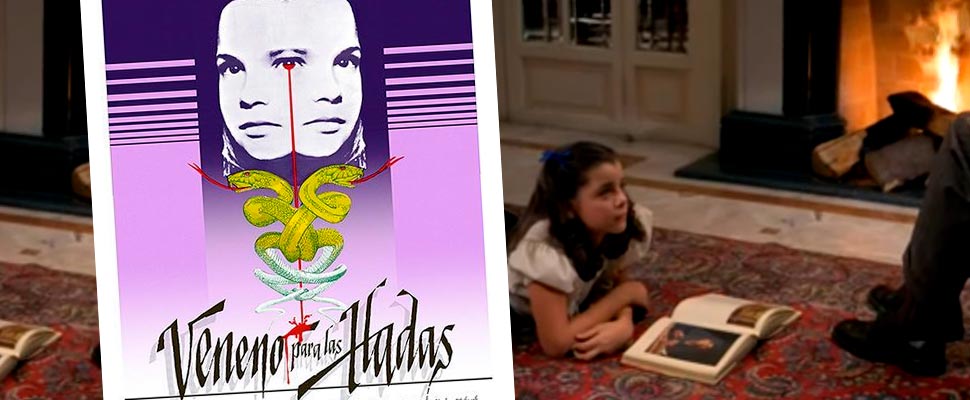October special: 6 horror classics from Mexican cinema
On the eve of Day of the Dead and Halloween enjoy these Mexican horror classics
On the eve of the Day of the Dead and Halloween, enjoy these Mexican horror classics.

These are some of the Mexican horror films. / Photo: YT / CUAAD
LatinAmerican Post | Luis Hernández Liborio
Listen to this article
Leer en español: Especial de octubre: 6 clásicos de terror del cine mexicano
A few days after Halloween and the Day of the Dead we present you 6 classics of Mexican cinema this season. Four of these films are by Carlos Enrique Taboada, a particularly iconic filmmaker in Mexican horror cinema. One is by the multi-award-winning Guillermo del Toro and one more by Roberto Gavaldón which is an essential film in the Day of the Dead festivities in Mexico.
Carlos Enrique Taboada
Carlos Enrique Taboada is "the master of terror" in Mexico. His only four films in the genre are cult films in his country, according to Rolling Stone . He was a director with extensive experience as a screenwriter on television and in film, but directing was his greatest legacy. In a critical era of Mexican cinema, Taboada knew how to take advantage of the low budget that he had by compensating it with well-told stories that many people continue to lose sleep over. In addition to the handling of terror, in his work he also highlights the importance of female characters who are the most relevant in all his stories.
Few films have achieved the relevance that Taboada's have in Mexican horror, even three of his films of this genre have been "victims" of the phenomenon of remakes, but none have come close to the success of the originals. These are the tapes that make up the tetralogy of terror by Carlos Enrique Taboada:
1. Even the wind is afraid (1968)
This story takes place in a boarding school for women run by Miss Bernarda, a cruel woman who punishes a group of friends by making them stay on campus during the holidays. The students suffer the torment of inexplicable events and one of them, Claudia, that of a ghost. This film is possibly the most famous of Taboada , the director terrorized the actresses to achieve the psychological effect and the atmosphere he wanted, this according to statements by actress Norma Lazareno to Marca Claro newspaper.
2. The Stone Book (1969)
The stone statue of a boy holding a book is the center of this story. Silvia is a girl who has moved with her father to a house in the country, where the statue is located. Little by little, the girl begins to change her attitude and to talk about an apparently imaginary boy named Hugo, who tells her strange things. Adults begin to believe in their story when strange events related to witchcraft and sorcery occur, discovering the relationship of the statue with what happens.
Also read: October Special: Evil Doll Movies
3. Blacker than night (1975)
On the death of Dona Susana, her niece Ofelia inherits the mysterious house that she inhabited. The only condition is that she has to take care of her cat, Becker. Ofelia accepts and moves in with three of her friends, but cannot fulfill the condition that her aunt left her because Becker appears dead soon after. This unleashes the fury of the deceased aunt, tormenting the large house that was her home and the young women who inhabit it.
4. Poison for fairies (1984)
The only Taboada film that has not had a remake , also being the most awarded of its tetralogy. This story focuses on the friendship of two girls: Verónica and Flavia. Verónica makes her friend believe that she is a witch and threatens to harm her if she does not comply with her demands, almost always material. Many coincidences help Verónica convince Flavia that she is a real witch, so she has no choice but to comply with what is asked of her. Flavia lives then tormented by her imagination, a child's play that begins to stop being so.
5. The Invention of Cronos (1993)
The invention of Cronos , also known simply as Cronos is the story of Jesus, an antiquarian who finds a rare artifact that is capable of extending the life of whoever uses it. The legendary and ancient artifact is also sought after by other people who wish to obtain it for their benefit. This feature film is nothing less than Guillermo del Toro's debut feature. Since its origins, the Mexican filmmaker has been linked to fantasy and horror stories. In his country, he directed episodes of series, advertising and other content related to the genre before having his chance in Hollywood, according to the newspaper El Correo . The publication also highlights that it was the director's first collaboration with Federico Luppi (El espinazo del diablo, El laberinto del pan) and with Ron Perlman (Blade II, Hellboy).
6. Macario (1960)
Although this film is not horror, it is a classic of the Day of the Dead in Mexico. It is an adaptation of the homonymous book by Bruno Traven. In colonial Mexico, Macario is an indigenous man, a father of a family and mired in poverty. Due to hunger, he wants to eat a turkey without sharing it with anyone, not even his family. Distressed for her husband, his wife decides to steal a turkey for Macario, who is looking for a distant place to eat it. In the place appears God, Satan and death, being the latter to whom he decides to give some of his food. In return, death begins to do favors for Macario, although things do not turn out as he wishes. It is one of the most important films in Mexican cinema , the first to be nominated for an Oscar for Best Film in a Foreign Language, according to information from Ibercine .





